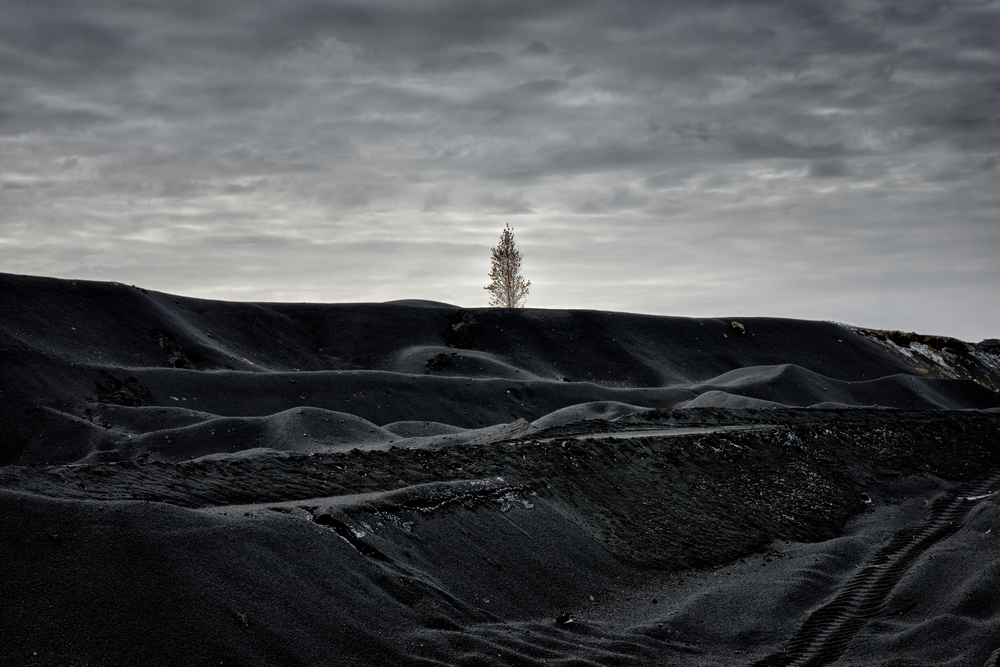Living Toxic, Karabash
-
PhotographerMittica Pierpaolo, Italy
-
Website
-
Instagram
The town of Karabash, from the Russian province of Chelyabinsk, is one of the most polluted places on Earth. A copper smelting plant, built more than 100 years ago, is situated in the town, and its toxic waste has created extremely large amounts of pollution and serious health problems for the inhabitants. Immense sulfur dioxide emissions, fall-out of metal-rich particulates and mounds of black slag are thought to be responsible for higher incidences of birth defects, skin diseases, cancer, strokes and congenital malformations.
From the 1910 when the copper smelting plant started, more than 180 tons of sulfur dioxide and metal particulates were released into the air every year.
The people living there have nowhere to go and are closer to death with every breath they take. The residential areas, the restaurants or cinemas are now resembling death-haunted places, and people hardly live more than 45 years.
The results of a survey conducted by the Chelyabinsk Provincial Institute for Public Health and Environment in 1994 found that children from Karabash were considerably smaller than children from the control group, had 3.5 times more birth defects, 2.7 times more skin diseases and suffered from heavy metal poisoning.
The forests, rivers and soil have an orange color because of iron, whose concentration is 500 times higher than normal limits.
The copper smelting plant was closed in 1990 when was declared by the authorities an "ecological disaster". But all the city jobs depend from the plant, all the population was without job and fall in poverty. So in 1998 the government was forced to reopen the facility under the pressure of the population that required work. The plant was reopened without any safety or environmental assessments.
The landscape is completely burned by dioxide, and the copper factories keep transforming the area into a living hell.
Italian humanist and environmental photographer/filmmaker, is an award - winning photographer based in Italy.
His photographs have been exhibited all over Europe, United States and China, and published in Italian and international newspapers and magazines among them: l'Espresso, Internazionale, Alias del Manifesto, Vogue Italia, Corriere della Sera
Repubblica, Panorama, Il Sole 24 ore, Oggi, Le Scienze, Daylight Magazine, Days Japan International, Asahi Shinbum, The Telegraph, The Guardian, Sueddeutsche Zeitung, Spiegel, Wired USA, Asian Geo, China Newsweek, National Geographic USA
Awards 2013 Special Prize by Juries “Days Japan international Photojournalism Awards”
2013 Honorable mention "Fotovisura Grant 2013"
2013 Finalist "Eugene Smith Grant 2013"
2013 Honorable Mention "PX3 Prix de la Photographie 2013"
2014 Public Prize "Days Japan International Photojournalism Awards 2014"
2014 Finalist "Leica Oskar Barnack Awards"
2014 Honorable Mention "PX3 Prix de la Photographie 2014"
2014 Finalist "Pictures of the Year international" category Environmental Vision Award
2015 Finalist "Pictures of the Year international" category best photography book award
2015 Finalist "Gomma Grant 2015"
2015 Honorable Mention "PX3 Prix de la Photographie 2015"
2015 Honorable Mention "SIPA Awards"
2015 Finalist "Travel Photographer of the year 2015"
2016 Remarkable Awards "SIPA awards"
2016 Honorable mention "SDN visual stories exploring global themes"
2016 Finalist POY Pictures of the year international, category "Environmental Vision Award"
2017 "Earth Reporter of the year 2017" from Earth Day Italia, Bologna, Italy 2017
2017 Highly Commended "Travel Photographer of the Year 2017"
2018 Finalist "Gomma Grant 2018"
2019 Shortlisted "Alexia Foundation Grant 2019"
2020 Shortlisted "Sony World Photography Awards 2020" Environmental category
2020 Finalist "Pictures of The Year International" Environmental Vision Award category
2020 Award of Excellence "Pictures of The Year International" Science & Natural History—Picture Story category




